Sunchokes, or Jerusalem artichokes (Helianthus tuberosus) are not so much a stable ground cover as masterful bed builders. They don’t just block, but obliterate grass lawn, taking the place of bed building mulch if handled correctly.
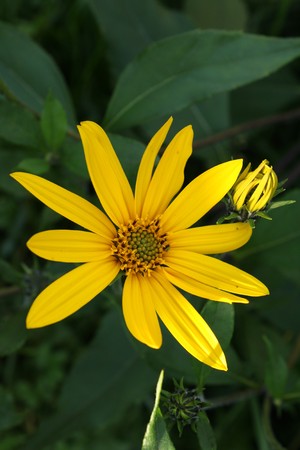
Its home is the American prairie biomes, where it stretches for sun among massive grasses and other very competitive plants. Placing it in the standard lawn, full of short European grass species, or even an overgrown field is like releasing a saber tooth tiger into a playpen with modern house cats. It’s a brute.
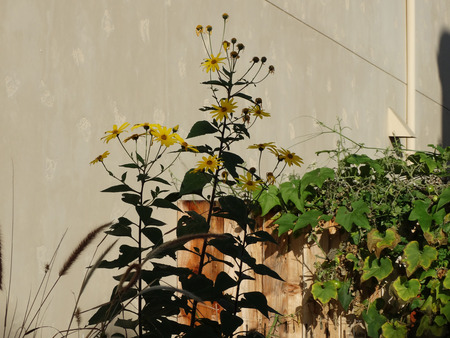
It begins by pumping nutrients from deep in the soil to power billowing clouds of leaves rambling up sometimes 15ft tall stems. At the end of the season, less fortunate species smothered below, it sucks all the nutrients gathered in its stems safely into the underground for storage in its edible tubers. Every year it sends out runners, some species more aggressive than others. One variety, “Supercluster,” Oikos Tree Crops sells is supposed to be well behaved, but most are decidedly imperialist, surging several feet out in all directions every year as resources allow. As long as it fills its nutrient reserves every year, the size of the open field it inhabits is its only limit.
To unleash the beast, get a bucket of the tubers in fall, and with a shovel, make little slits in the ground about one foot apart, inserting the tubers deep enough they aren’t exposed, and walk away. The days of the nearby plant residents are now numbered.
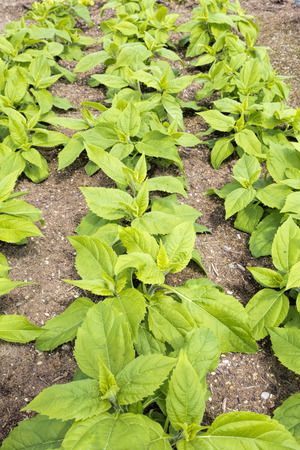
Don’t worry next spring when the tubers don’t sprout early. Sunchokes don’t like frost, and wait until late in the spring to pop up their furry little heads. I have planted these into completely unamended yards where lawn grass wasn’t even happy, but the ‘chokes still grew well. Results of removing grass and patch expansion are best if the patch is left a year or two before harnessing it for actual bed building.
It is very difficult to put strong beasts like sunchoke to use with brute force. You have to outsmart them. This you do by pinpointing their one weakness, and suddenly you have them in the palm of your hand. Because exploiting this weakness is so effective, I must go begging to my friends for new tubers in fall because I have accidentally wiped out my propagation patches.
I have quite a hard time removing their disbelief. Sunchokes are otherwise known in the gardening world as hard-to-chokes, which is why I don’t recommend digging up your newly cleared bed to remove the plants. I have never seen this work. Though you could swear all the tubers are removed, the plants always return. Some varieties were selected from patches sprayed with roundup -and lived.
Biologically, sunchokes are impenetrable tanks of ecosystem war, and have the potential to become the worst weeds for your new planting. I would not in any way suggest their use anywhere near your garden if it wasn’t for the one gap in their armor.
You see, ‘chokes go all out to ensure they get as tall and bushy as they can. Having invested every last bit of stored food from their tubers into the above ground stems, it’s as though the plant stood on top of the ground and could just be gathered up as a pile of stems to be placed somewhere else.
I discovered this one year when a particularly healthy, bushy specimen blew over in a windstorm, partially uprooting it. I broke the plant off, cracking up the lush growth to mulch the bed, expecting to see the plant return next spring. I was surprised when next year there was nothing.
Later, in a very dry year, sunchokes were the most lush thing in my food forest to feed my rabbit. She liked them, so I would snap off the growing tips, let the plants branch off to the side, and snap of the side branches to make rabbit happy. I started this when the plants were about 5ft tall, leaving about 4ft stems that in turn could return their nutrients to the tubers. Nevertheless the plants that normally topped ten foot came up the next year anemic, and dwarfed, barely reaching three feet.
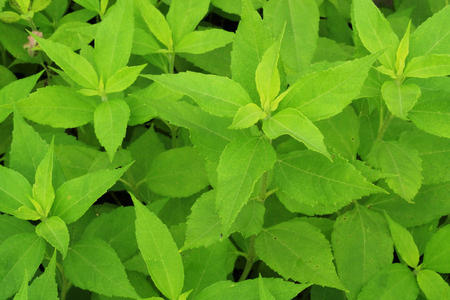
The exact point in time when they seem most vulnerable is just before bloom at a certain time when the growth of leaves changes from being as tightly stacked and lush as possible, to becoming a bit more sparse, the stem getting harder, and the flower buds showing up quickly afterward.
Flowering, and in fact most dieback processes of plants, are accompanied by the production of ethylene gas, which in the ‘chokes I would guess also begin the back flow of sugars in the leaves to the more complex carbohydrates in the tubers, and oxidation of the stem fibers, making them woody and brittle. Cutting ‘choke down just before signs of this hormone’s activity seems to be their secret weakness.
In my climate, this means cutting the plants off about a foot tall in July. It is helpful to leave some stem to make lots of side shoots. A second cutting, about a month later, to remove the side shoots and what’s left of the stem, perhaps even some roots, in my experience, weakens the plant beyond recovery.
Some gardeners I have explained this method to ardently insist I’m wrong. They cite their own experience of mowing sunchoke patches for two years and the ‘chokes just growing up over and over again.
I have gotten excellent results with the method in my experience. That they were only a few years old unlike the decades old patches in these other reports may play a role. I doubt it though. On the one plant that blew over I saw a very large clump of tubers which I left in the ground.
Perhaps it is more a question of the plants adapting to growing less each time they are cut back, developing a sort of stunted homeostasis. They may have grown more miserly with their output of stored sugars. I think it is imperative that you allow the roots to put maximum growth above ground, then sap the last little bits of strength out of them with subsequent cutting.
Be cautious of course in planting the sun chokes and letting them run wild. If you closely follow the details I have given, I am confident you can get very similar results. Feel free to let me know how it goes.
Hacking off all this biomass leaves a lovely, thick mulch for planting into next spring. Grass is usually gone by this time. Adding some grass mulch early next spring ensures establishment is smooth the next year, but very little is necessary compared to normal bed building. If used well -in conjunction with the other ground covers, sunchokes are a real workhorse, with the potential to carry your efforts to the blissful state of an established, productive, ground thickly covered food forest.
Photo credits (because I’ve accidentally killed so many of my sunchokes with this method): Top photo by elzeva, second down Gurcharan Singh, third down Harald Biebel, bottom Tawee Wongdee


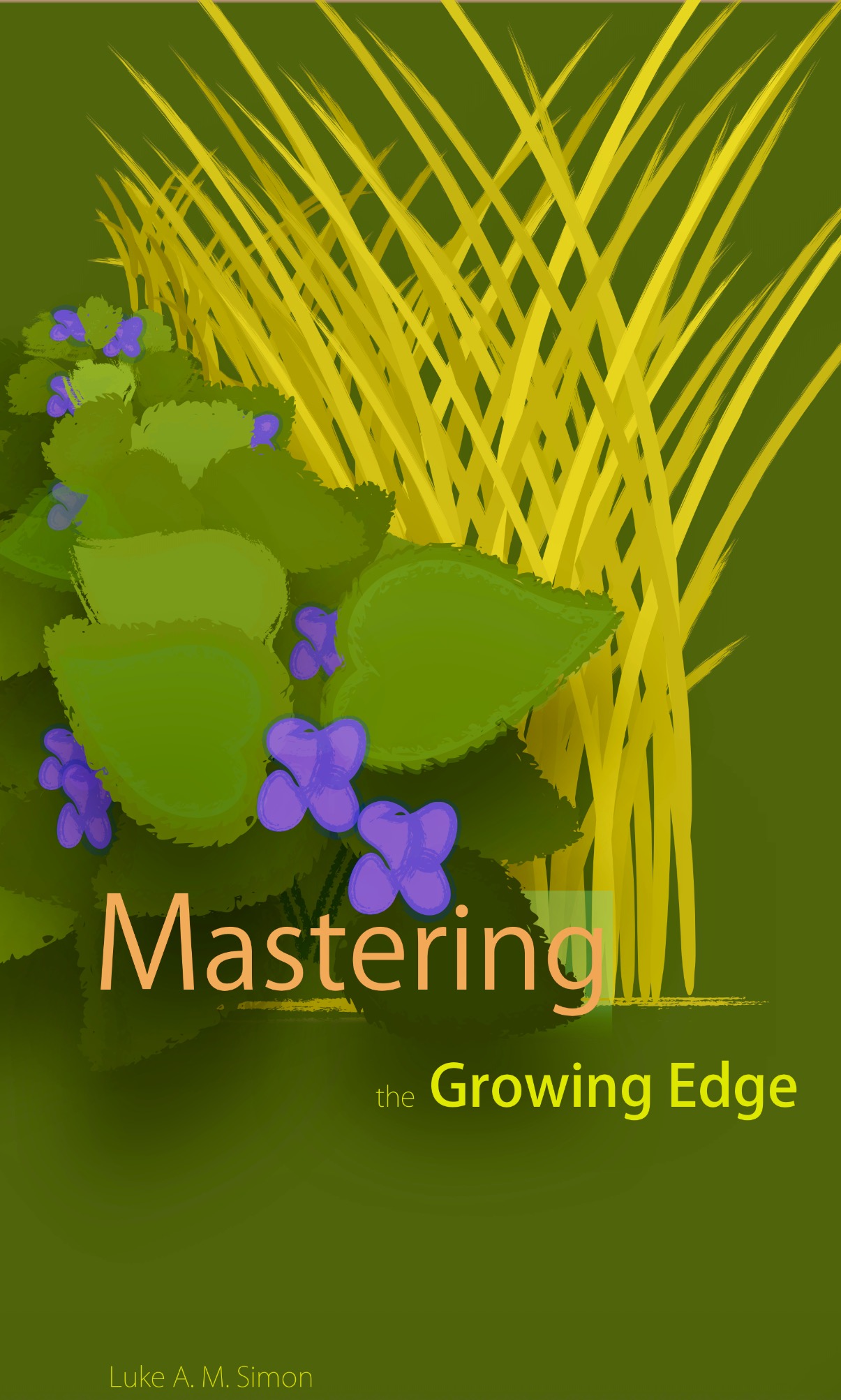

This post has great info, but I also wanted to note it was charmingly written and a pleasure to read!
LikeLike
I’m trying to get the two more comfortable with each other. It certainly is difficult at times, but it delivers wonderful results. Thanks for mentioning it.
LikeLike
Good to know how to stop my Jerusalem artichokes from taking over, should I need to!
LikeLike
If ever the need arises, I would love to hear how it goes for you. Thanks for your interest.
LikeLike
Thank you and you’re welcome!
LikeLike
Very interesting–thanks for posting. Do you think this technique could eradicate Japanese Knotweed? And relatedly, cutting down Knotweed shortly before its flowering as a weakening strategy?
LikeLike
Thank you. As for the knotweed, you have the right idea. It should be quite effective. It might take longer due to knotweeds extremely large root system. It’s interesting to note from reports I’ve read that in its native Japan, knotweed is a riparian plant, which dies out on its own once larger trees move in. In America, and much of Europe, it shows an increased longevity and resilience. Just shows how delicate ecologies are. I’d love to hear if and how this works for you. Thanks for asking!
LikeLike
Thanks–you give me hope in my never-ending battle with this plant! I do respect its tenacity and its reserves of Resveratrol (and being a herbal treatment for Lyme), but I simply have too much of it and it’s spreading aggressively. I’m going to try both cutting it at the key time and planting some competing sunchokes–and will let you know if something interesting happens.
LikeLike
This is the 3rd year I am yet again to get anything to happen with my sunchokes. I thought you were going to say not enough sunlight was their kryptonite. Last year I moved them to ensure a bit more sun and my results were even worse. Yet I did get a few little knots. Trying them once again. I am wondering if you know some different varieties that I could purchase. I would love a larger tuber. A few pingpong sized to fingerling potatos is about all I get.
LikeLike
If they have sun then soil fertility would be my first suggestion. My happiest sunchokes have been in new beds (newly mulched).
I have gotten good results with ‘Stamede’ and not looked much further. Oikos Tree Crops has a large selection though if you are looking for something new.
LikeLike
Great article. I love lines like “impenetrable tanks of ecosystem war” to describe them. I love mine for a variety of reasons and wish I knew people who wanted theirs gone. I’d come and dig them up. But a funny and informative read.
LikeLiked by 1 person
Glad to hear it entertained and informed, Bob. I run into the same issue of looking for more sunchokes, myself. I find snipped tips can root similar to the way I propagate comfrey in this article here: https://mortaltree.blog/2015/04/27/propagating-comfrey/
LikeLike